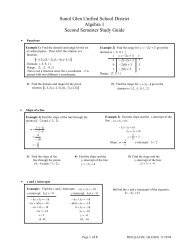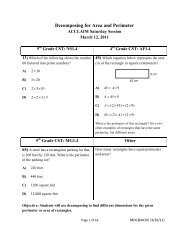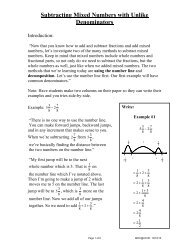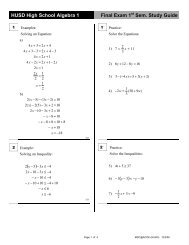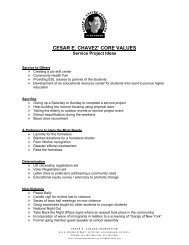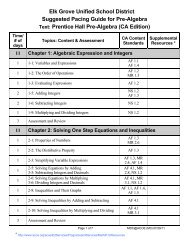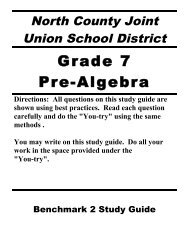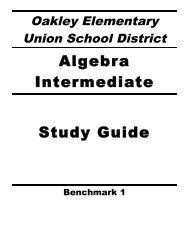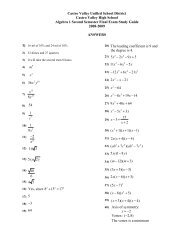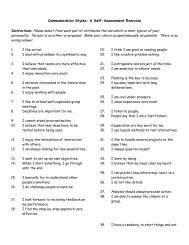Investigating Similar Triangles and Understanding Proportionality ...
Investigating Similar Triangles and Understanding Proportionality ...
Investigating Similar Triangles and Understanding Proportionality ...
- No tags were found...
Create successful ePaper yourself
Turn your PDF publications into a flip-book with our unique Google optimized e-Paper software.
<strong>Investigating</strong> <strong>Similar</strong> <strong>Triangles</strong> <strong>and</strong> Underst<strong>and</strong>ing <strong>Proportionality</strong>7. Using your ruler, your pencil <strong>and</strong> a piece of tracing paper, trace the smaller triangle, . Glue ortape it to your paper next to . You now have two similar triangles.8. In the table below, identify <strong>and</strong> list the corresponding sides <strong>and</strong> the corresponding angles of yourtwo triangles. Also, label each of the side lengths <strong>and</strong> angle measures on the two pictures.(Label on the paper <strong>and</strong> label on the tracing paper.)Corresponding SidesCorresponding Angles9. Create ratios using the corresponding sides of the two triangles. Refer to your chart above for help.Write the ratios as shown in the table below. Once you have set up the ratios, find the quotient.(Use your calculator to find the answer to the division problem!)Ratio #1 Ratio #2 Ratio #310. What do you notice about the ratios of the corresponding sides?__________________________________________________________________________________________*We say that the sides are proportional because the ratios of the corresponding sides are ________________.Page 3 of 5MCN@ACOE 03/12/11




